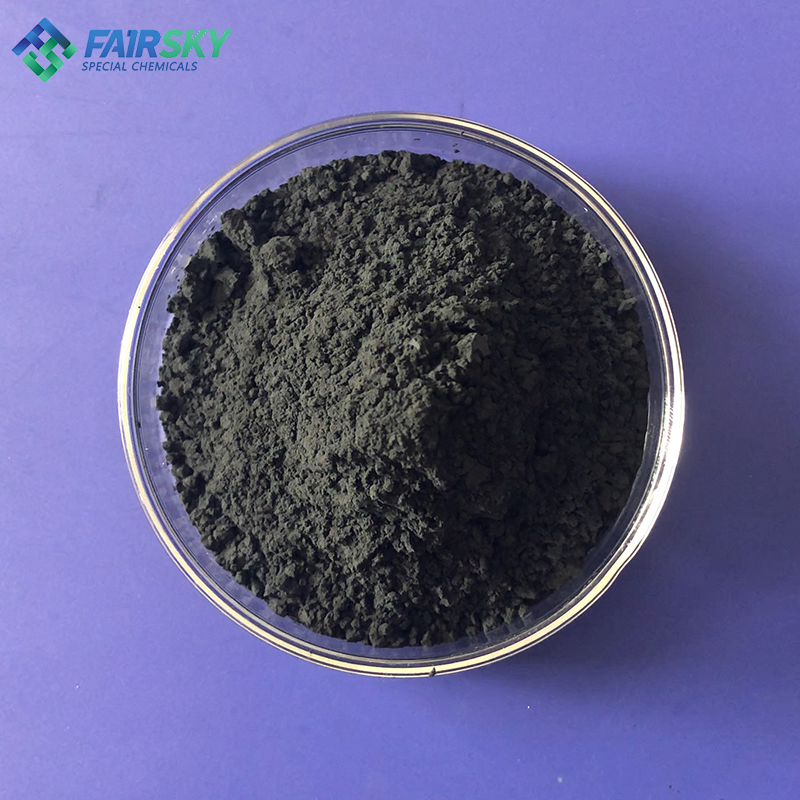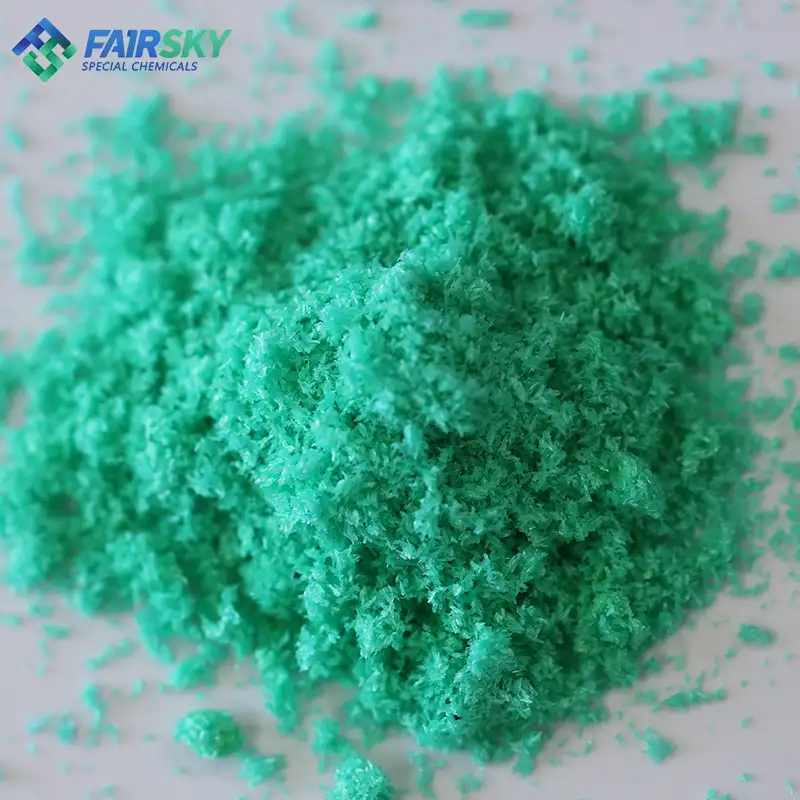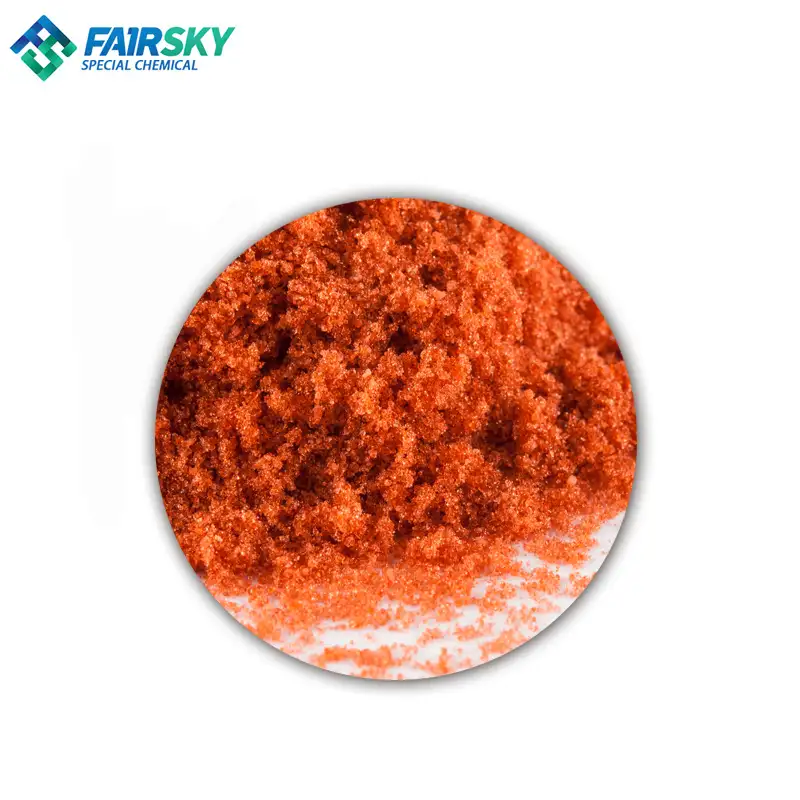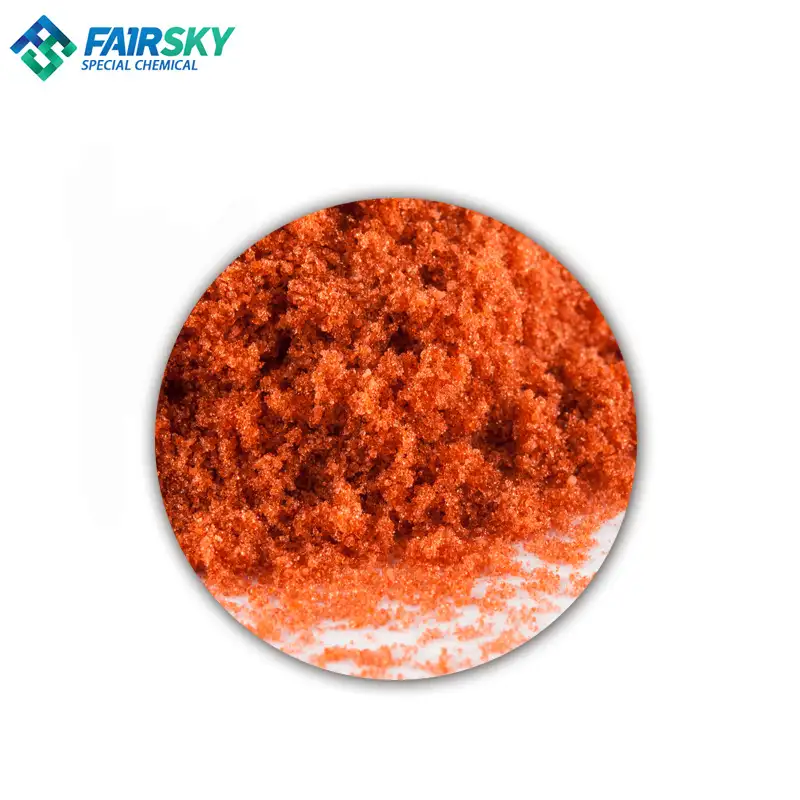Copper oxide related information
Copper oxide is a compound from the two elements copper and oxygen. Copper oxide may refer to: Copper(I) oxide (cuprous oxide, Cu2O) Copper(II) oxide (cupric oxide, CuO)
Copper(I) oxide
Copper(I) oxide or cuprous oxide is the inorganic compound with the formula Cu2O. It is one of the principal oxides of copper, the other being or copper (II) oxide or cupric oxide (CuO).
This red-coloured solid is a component of some antifouling paints. The compound can appear either yellow or red, depending on the size of the particles. Copper(I) oxide is found as the reddish mineral cuprite.
Cuprous oxide is used to make antifouling paint for ship bottom (to kill low-level sea animals). It is used as a fungicide, coloring agent for ceramics and enamels, red glass stain, and also used in the manufacture of various copper salts, analytical reagents and materials for rectification plating in the electrical industry, fungicides for crops and rectifiers, etc. Cuprous oxide is also commonly used as a catalyst in the synthesis of organic substances.

Copper(II) oxide
Copper(II) oxide or cupric oxide is the inorganic compound with the formula CuO. A black solid, it is one of the two stable oxides of copper, the other being Cu2O or copper(I) oxide (cuprous oxide). As a mineral, it is known as tenorite.
It is a product of copper mining and the precursor to many other copper-containing products and chemical compounds.
Cupric oxide, or copper (II) oxide, is an inorganic compound with the chemical formula CuO. Cupric oxide is used as a precursor in many copper-containing products such as wood preservatives and ceramics.
Cupric oxide may be found in over-the-counter vitamin-mineral supplements as a source of [DB09130]. The mean daily dietary intake of copper in adults ranges between 0.9 and 2.
2 mg. Common routes of cupric oxide exposure include ingestion, dermal exposure and inhalation. Copper(II) oxide nanoparticles (NPCuO) have industrial applications as antimicrobial agents in textiles and paints, and catalysts in organic synthesis.
They may also be produced from electronic wastes. Cupric oxide poses potential health and environmental concern due to toxic and mutagenic particles generating reactive oxygen species.

Copper peroxide
Copper peroxide is an inorganic compound with the formula CuO2.
It is an oxide of copper(II), with the two oxygen atoms as a peroxide unit. It appears as a dark olive green solid or similarly colored suspension and is unstable, decomposing to oxygen and other copper oxides.
Copper(III) oxide
Copper(III) oxide is a hypothetical inorganic compound with the formula Cu2O3.
It has not been isolated as a pure solid. Copper(III) oxides are constituents of cuprate superconductors. Copper(III) is typically stabilized in an ionic environment, e.
g. potassium hexafluorocuprate(III).









